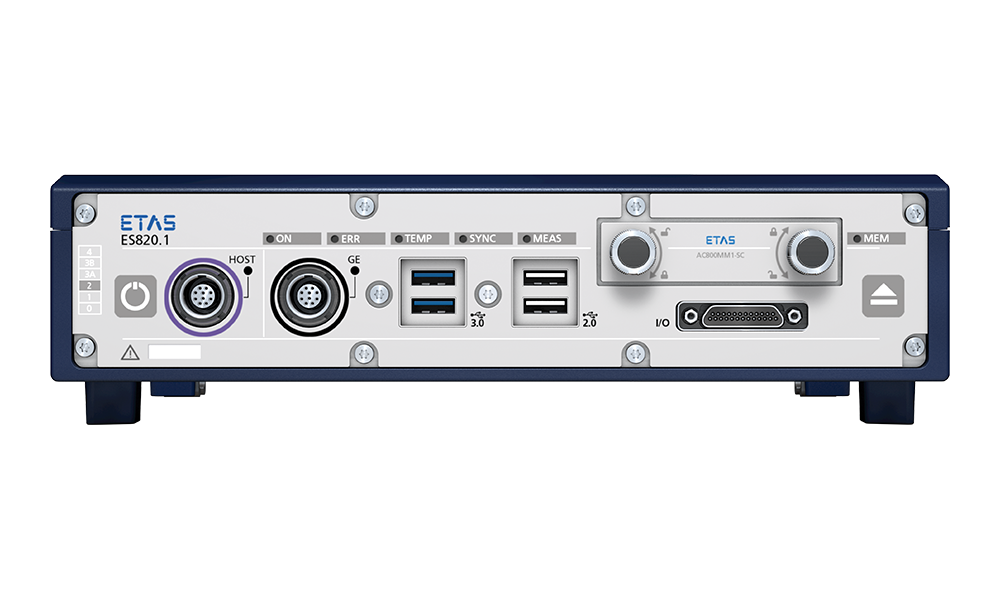
Acquisition of measurement data
Event-driven activation of the drive recorder is possible via bus traffic, ignition, digital signals, or timers. This allows measurement tasks to be carried out autonomously. Four digital inputs and four digital outputs are available via a connector. They can be used as triggers or markers (inputs) and to display system statuses or events (outputs). In addition, the front panel control elements can be operated by a remote panel, for example from the driver’s seat.
Fast measurement readiness and short boot intervals
In standby mode, the ES820 module is measurement-ready in around 10 seconds. The module is switched between standby and measurement mode either manually using the button on the device, via time control, via remote control using a TTL signal – e.g. with "Terminal 15" – or by switching a connected PC or Ethernet module on or off.
Complex trigger conditions
With suitable trigger conditions, it is possible to intelligently control how the module records data. The drive recorder offers the same trigger mechanisms as INCA. INCA provides a convenient way of designing, testing, and changing trigger conditions before they are deployed in the drive recorder.
Multi-recorder
Several vehicle functions are generally tested simultaneously during test drives. Often, the various experiments are supervised by different experts. The ES820 drive recorder supports the simultaneous recording of different measurements (multi-recording). Each of the individual recorders can be assigned to different start and stop triggers and their own group of measurement signals. The recorders are running in parallel and store the data they acquired to individual measurement files.
Diagnostics
In addition to the control functions, the onboard diagnostics of ECUs also have to be carefully tested. The ES820 module supports the standard diagnostic interfaces and protocols. Based on ODX descriptions, the device is able to access the vehicle’s diagnostic system. Using diagnostics data recorded simultaneously with signals from sensors, buses, and ECUs, it is possible to analyze diagnostic errors in correlation with the behavior of the rest of the system.
Recording data for rapid prototyping models
New controls are tested in real operation with the help of prototypes. To validate the correct behavior of new ECU functions, the ES910 prototyping module can be connected to the ES8xx system in parallel with other signal sources, provided the ES820 Experimental Target Integration Package add-on is installed.
Configuration
A configuration tool that enables users to create device-specific settings and recording jobs is delivered with the ES820 drive recorder. The configuration tool is a PC application that accesses the ES820 module directly. It displays the system status and can be used to exchange data manually.
Data transfer
An exchangeable memory module permits the recording of very large data volumes and rapid transfer of the data to the corporate network. This helps to minimize test vehicle downtime due to data transfer.
The ES820 module supports a variety of data transmission methods. With the Windows-based operating system, users can easily implement customized applications, such as the automatic transmission of encrypted and compressed measurement files to data servers via the network.
The configuration tool allows users to set trigger conditions for automated file transfer. For the transmission of measurement and configuration data, the following media and mechanisms can be used:
- (S)FTP
- Windows file shares
- USB memory modules
- Internal SDD memory module